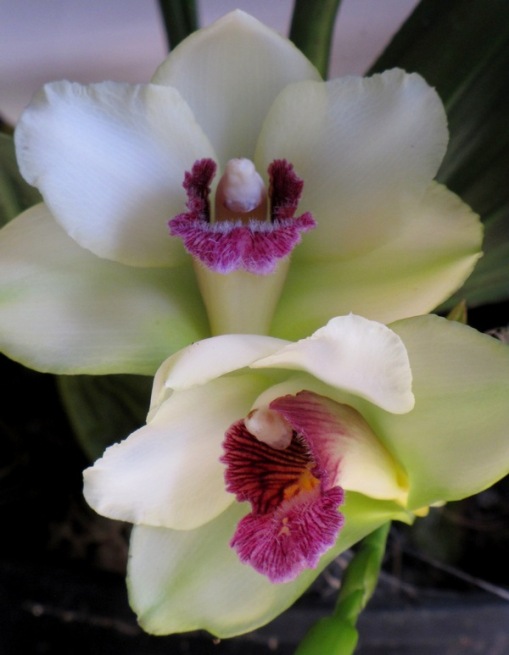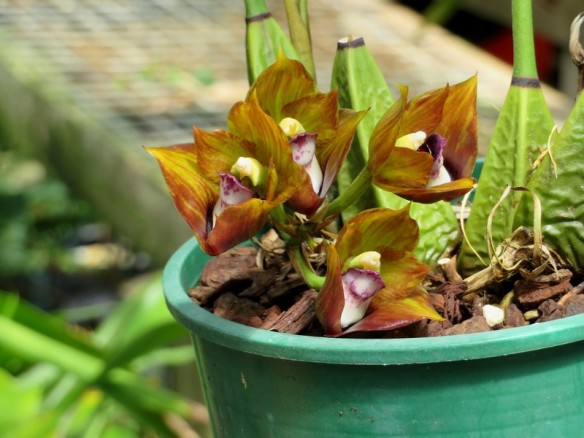Bifrenaria are a South American species of orchid with about half the 20 or so species coming from Brazil.
The sweet scent of the flowers of Bif. harrisoniae, which are on short stems at the base of the pseudobulbs, becomes apparent in the late afternoon.

The flowers of Bifrenaria harrisoniae. Photo: Sandra Simpson
The American Orchid Society website says of this orchid: “In its natural habitat it can be found on east-facing rocky cliffs at 200-800m. The plants grow exposed to sun and wind but their roots anchor them firmly by penetrating cracks in the rock face. There is near perfect drainage, constant air movement, and bright light. Temperatures range from 14°C-27°C and quite a bit cooler in the months before flowering. Rainfall is concentrated in the warmer months and after the blooming season (late spring-early summer). Humidity is high year round.
“Bifrenarias not only can grow lithophytically but they also grow over water where there is a steady year round supply of humid air, irrespective of rainfall. We should bear in mind that these tough orchids like it humid and breezy even when water is being withheld.”
The AOS recommends watering heavily while plants are growing, then withholding water once pseudobulbs have matured, and growing the plants cooler. High humidity year round with good air movement.

Bifrenaria tetragona in a local collection. Photo: Sandra Simpson
Bif. tetragona also has a distinctive scent but nowhere near as sweet as Bif. harrisoniae! It is grown in much the same way as Bif. harrisoniae and flowers in late summer.
Apparently, Bifrenaria don’t like being disturbed so repot only when absolutely necessary and only when new growth is starting – each division should consist of two or more pseudobulbs. A mix of bark with a little coarse sphagnum and some perlite is recommended.
A balanced fertiliser mixed at quarter to half the recommended strength should be applied once a week during active growth. After new growth is mature, use a fertiliser with less nitrogen and more phosphorus to allow the new growth to harden before winter and to promote better blooming the following season.
In winter reduce water to occasional misting or light watering and eliminate fertiliser for about 2 months. Gradually resume normal water and feeding as new growth starts. Successful growers report these plants should not be treated too well in winter. They suggest water and fertiliser be restricted to every second or third time that Cattleyas are watered and fed. The pseudobulbs should shrink and even shrivel a bit during the
winter rest, and plants should be placed where they will receive maximum light.
